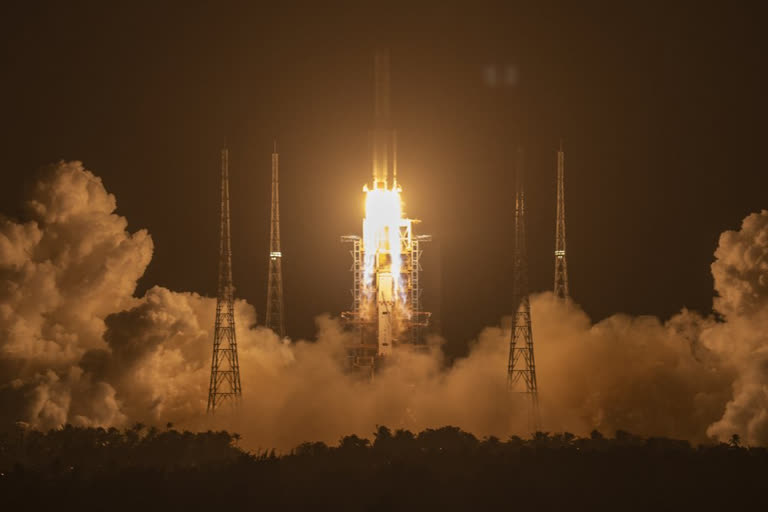Beijing/Wenchang: China successfully launched its first unmanned space mission on Tuesday to collect samples from the moon's surface and return to earth, the country''s maiden attempt to retrieve materials from an extra-terrestrial body.
China has successfully launched the Chang'e-5 lunar probe from the Wenchang Spacecraft Launch Site in the southern province of Hainan, state-run CGTN reported. The spacecraft was launched by a Long March-5 rocket at 4.30 am (Beijing Time).
Chang'e-5 is one of the most complicated and challenging missions in China's aerospace history, as well as the world''s first moon-sample mission in more than 40 years.
The United States sent astronauts to the moon to collect samples. In the Soviet Union''s unmanned lunar sampling missions, the spacecraft took off from the moon and returned to Earth directly.
But China chose a complicated technological approach including unmanned rendezvous and docking in lunar orbit, which could bring back more samples and lay a technological foundation for manned lunar missions, according to Pei Zhaoyu, deputy director of the Lunar Exploration and Space Program Centre of the China National Space Administration (CNSA), ahead of the launch.
The mission will help promote China''s science and technology development and lay an important foundation for China''s future manned lunar landing and deep space exploration, Pei said.
Chang'e-5, comprising an orbiter, a lander, an ascender and a returner, with a total take-off mass of 8.2 tonnes, is expected to accomplish unmanned rendezvous and docking in lunar orbit, a complicated feat.
After it enters the lunar orbit, the lander-ascender combination will separate from the orbiter-returner combination.
While the orbiter-returner orbits about 200 km above the lunar surface, the lander-ascender will touch down on the northwest region of Oceanus Procellarum, also known as the Ocean of Storms, on the near side of the moon in early December, state-run Xinhua news agency reported.
Within 48 hours, a robotic arm will be extended to scoop up rocks and regolith on the lunar surface, and a drill will bore into the ground. About 2 kg of samples are expected to be collected and sealed in a container in the spacecraft.
Then the ascender will take off, and dock with the orbiter-returner in orbit. After the samples are transferred to the returner, the ascender will separate from the orbiter-returner.
When the geometric relationship between Earth and the moon is suitable, the orbiter will carry the returner back to the planet. The returner will re-enter the atmosphere and land at the Siziwang Banner in north China''s Inner Mongolia Autonomous Region.
